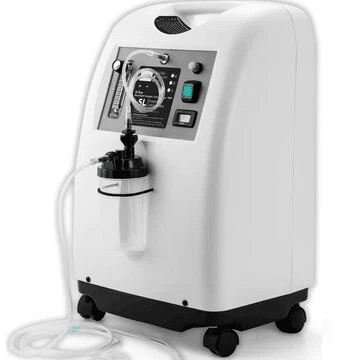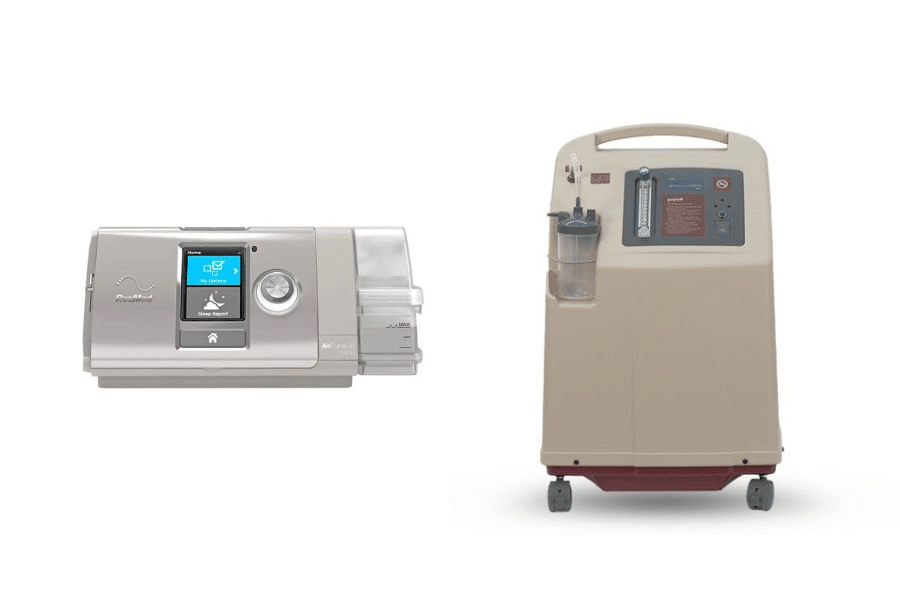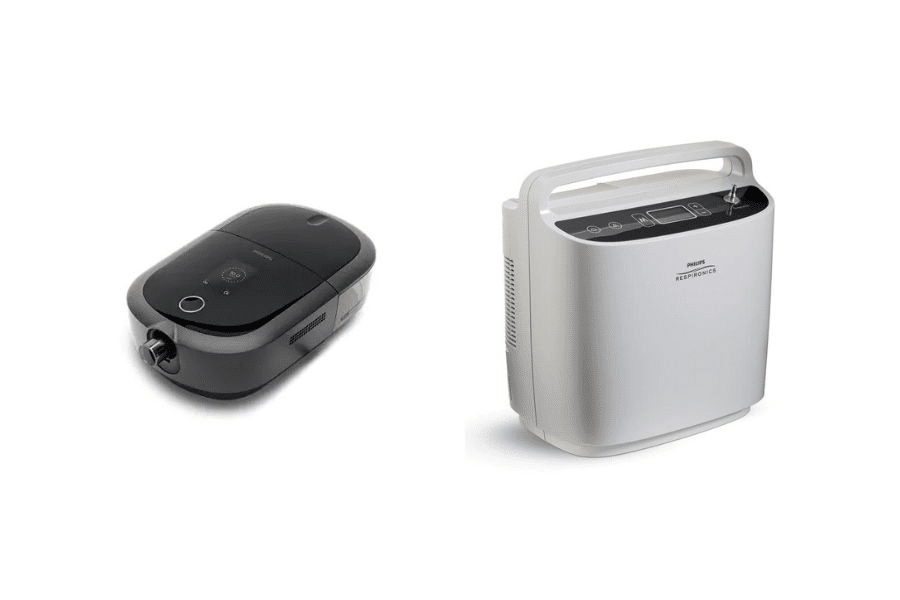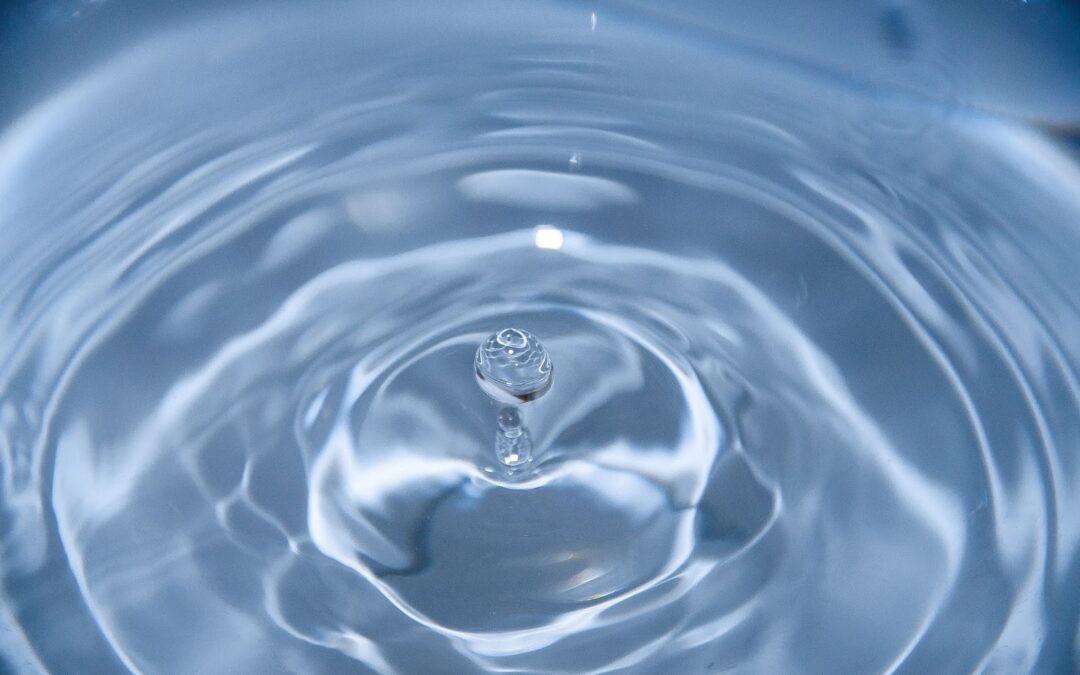In medical advancements, the debate over CPAP Machine vs Oxygen Concentrator shines a light on two crucial devices that play distinct yet vital roles in enhancing human well-being. As medical technology continues to evolve, understanding the differences between these two devices becomes increasingly important.
What is an Oxygen Concentrator?

An Oxygen Concentrator is a sophisticated medical device designed to generate and supply concentrated oxygen to individuals with compromised respiratory function. Unlike oxygen cylinders that require frequent replacement, an Oxygen Concentrator extracts oxygen from the ambient air, offering a continuous and reliable source of enriched oxygen.
This innovation has revolutionized the treatment and management of various respiratory conditions.
The Oxygen Concentrator employs a multi-step process to deliver oxygen of higher purity. It begins by drawing in atmospheric air through an intake filter. This air is then compressed, typically using a compressor, to increase its pressure. The compressed air passes through a molecular sieve, which selectively absorbs nitrogen and other trace gasses, leaving behind oxygen-rich air.
This oxygen-enriched air is collected and delivered through a mask or nasal cannula, ensuring that the individual receives the required oxygen levels for improved breathing.
Advantages
The advantages of utilizing an Oxygen Concentrator are manifold.
Firstly, it provides a non-invasive and continuous means of oxygen supplementation, enhancing oxygen saturation levels without the need for invasive procedures. This is particularly crucial for patients who require long-term oxygen therapy.
Mobility and convenience are also enhanced by modern portable Oxygen Concentrators, allowing individuals to engage in daily activities with greater ease, unlike the constraints of carrying an oxygen tank.
Disadvantages
However, like any medical intervention, Oxygen Concentrators come with certain limitations. They require a power source to function, which can limit their use in locations without reliable electricity. Maintenance and filter replacement are essential to ensure optimal performance and prevent contamination.
Moreover, while Oxygen Concentrators are effective in delivering supplemental pure oxygen they might not be suitable for individuals with extremely severe respiratory conditions that necessitate higher oxygen flow rates.
What is a CPAP Machine?
A CPAP (Continuous Positive Airway Pressure) Machine is a specialized medical device designed to treat sleep apnea. The fundamental principle underlying the CPAP Machine’s function is its ability to counteract the airway collapse that occurs in sleep apnea. As an individual drifts into deep sleep, the muscles responsible for maintaining airway patency can relax excessively, leading to partial or complete blockages.
The CPAP Machine combats this by delivering a continuous flow oxygen through a CPAP mask that covers the nose or nose and mouth. This steady flow of air functions as a pneumatic splint, holding the airway open and allowing uninterrupted breathing.
Learn more: What is a CPAP Machine, and What Does It Do?
Advantages
Its primary advantage lies in effectively treating sleep apnea, thereby improving sleep quality, reducing daytime drowsiness, and enhancing cognitive performance. Furthermore, addressing sleep apnea can have positive cascading effects on heart health and overall well-being.
Disadvantages
However, adherence to CPAP therapy can present challenges. Adjusting to wearing a mask during sleep might require time and patience. Proper mask fitting and comfort are paramount to ensure consistent usage. Some individuals might experience mask-related discomfort, dryness, or pressure sores. Additionally, CPAP therapy’s efficacy hinges on consistent and correct usage, which could be impeded by personal factors or discomfort.
Differences Between Oxygen Concentrators And CPAP Machines

The profound disparities between Oxygen Concentrators and CPAP Machines extend beyond their physical appearance, encompassing their intended purposes, mechanisms of action, usage patterns, and impact on patient well-being.
Purpose and Medical Conditions
- Oxygen Concentrator: Focus on respiratory conditions requiring oxygen support
The Oxygen Concentrator finds its niche in respiratory care, serving individuals grappling with conditions that compromise their ability to extract adequate oxygen from the air. Chronic respiratory ailments such as COPD, pulmonary fibrosis, and even severe asthma necessitate supplemental oxygen to enhance oxygen saturation levels and alleviate breathlessness. The Oxygen Concentrator addresses these concerns by enriching ambient air with oxygen, ensuring a consistent supply for inhalation. - CPAP Machine: Focus on sleep disorders like sleep apnea
The CPAP Machine, on the other hand, addresses the realm of sleep medicine, particularly sleep apnea. This condition, characterized by recurrent interruptions in breathing during sleep, requires intervention to maintain unobstructed airflow.The CPAP Machine’s primary role is to deliver a continuous stream of air at a slightly elevated pressure, preventing airway collapse and maintaining regular breathing patterns throughout the night.
Mechanism of Action
- Oxygen Concentrator: Oxygen enrichment for inhalation
The Oxygen Concentrator’s mechanism centers on selectively separating oxygen from ambient air. By utilizing a molecular sieve, nitrogen and other gasses are removed, resulting in oxygen-rich air that’s then delivered for inhalation. This process effectively augments oxygen levels, supporting improved respiratory function. - CPAP Machine: Airway pressure to keep the airway open during sleep
In contrast, the CPAP Machine’s operation revolves around its ability to maintain airway patency. By delivering a continuous stream of pressurized air at a slightly higher pressure, it prevents the airway from collapsing during sleep.This pressure acts as a pneumatic splint, enabling uninterrupted breathing and averting the disruptions characteristic of sleep apnea.
Usage and Application
- Oxygen Concentrator: Continuous usage, often throughout the day
Oxygen Concentrators are designed for continuous use, often required throughout the day. Individuals with chronic respiratory conditions rely on a constant supply of oxygen to engage in daily activities and maintain optimal health. - CPAP Machine: Primarily used during sleep hours
CPAP devices, in contrast, are primarily utilized during sleep hours. Individuals affected by obstructive sleep apnea wear the CPAP mask while sleeping, allowing the device to maintain airway openness and ensure uninterrupted breathing throughout the night.
Patient Experience
- Oxygen Concentrator: Improved breathing, increased energy levels
For those using an Oxygen Concentrator, the benefits extend beyond mere medical management. The enriched oxygen leads to improved breathing, reduced fatigue, and heightened energy levels. Engaging in physical activities and daily tasks becomes more manageable, fostering an enhanced quality of life. - CPAP Machine: Enhanced sleep quality, reduced snoring and interruptions
Users of CPAP Machines often experience a transformation in their sleep quality. By effectively counteracting the interruptions in breathing characteristic of sleep apnea, the CPAP Machine facilitates uninterrupted sleep cycles.This translates to reduced daytime sleepiness, improved cognitive function, and alleviation of related symptoms like snoring and gasping.
Benefits of Technology Integration

The landscape of medical devices is ever-evolving, and Oxygen Concentrators and CPAP Machines have not remained untouched by the wave of technological innovations.
Oxygen Concentrator
- Portable and lightweight options
In the pursuit of enabling users to maintain their active lifestyles, Oxygen Concentrator technology has witnessed the development of portable and lightweight models. Unlike the traditional stationary units that confined users to a specific location, these modern counterparts empower individuals to venture outdoors and engage in daily activities. Portable Oxygen Concentrators are compact, often with battery options, allowing individuals to enjoy social gatherings, travel, and even exercise while continuing their oxygen therapy. - User-friendly interfaces and noise reduction
The modern Oxygen Concentrator’s user interface reflects a dedication to user convenience. Intuitive controls and easy-to-read displays simplify adjustments and settings, making it easier for users to monitor and manage their therapy. Additionally, technological innovations have led to quieter operation, minimizing disturbances to both users and their surroundings.
CPAP Machine
- Compact designs for increased comfort
CPAP Machines have undergone a significant transformation in terms of design and comfort. This change is not only aesthetically pleasing but also contributes to a more comfortable sleep environment, allowing users to sleep in their preferred positions without feeling encumbered. - Smart features for data tracking and adjustment
Many manufacturers equip modern CPAP Machines with features like data tracking and remote adjustment capabilities. Users can access detailed data about their sleep patterns and therapy adherence, allowing for more informed discussions with healthcare providers. Moreover, automatic adjustments to pressure levels based on real-time data ensure optimal therapy effectiveness without requiring constant manual intervention.
Considerations For Choosing Between The Two
When it comes to selecting between Oxygen Concentrators and CPAP Machines, a holistic approach that considers multiple factors is crucial.
Here are key considerations to keep in mind when making this significant decision:
1. Consulting Medical Professionals
Before embarking on any medical decision, consulting healthcare professionals is paramount. Physicians, pulmonologists, and sleep specialists possess the expertise to evaluate your specific condition and recommend the most appropriate course of action. Their insights ensure that your choice aligns with your health needs and optimizes treatment outcomes.
2. Diagnosis and Prescribed Treatment
The underlying medical condition and prescribed treatment heavily influence the decision-making process. If your primary concern is managing a respiratory condition requiring supplemental oxygen, Oxygen Concentrators are tailored to your needs. Conversely, if sleep apnea is the concern, CPAP Machines are designed to address this specific sleep disorder effectively.
3. Lifestyle Factors
Your lifestyle considerations play a substantial role in determining which device suits you best. If you’re an active individual who values mobility, a portable Oxygen Concentrator might align well with your routine. On the other hand, CPAP Machines primarily used during sleep hours may be more suited to individuals seeking an uninterrupted slumber.
4. Cost and Insurance Coverage
Affordability and insurance coverage are practical aspects to consider. While the cost of Oxygen Concentrators and CPAP Machines varies, insurance policies often cover a portion of the expenses, particularly if the devices are prescribed for medical reasons. Investigate your insurance policy to understand the coverage available for each option.
As you stand at the crossroads of choosing between Oxygen Concentrators and CPAP Machines, let this knowledge be your guiding light. Your unique medical condition, lifestyle, and preferences are the compass that should direct your decision. Thanks for reading!
If you’re searching for CPAP accessories, consider visiting this Amazon page.
What stood out to you the most in this write-up?



